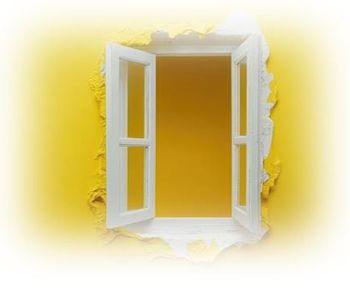
Lhermitte-Duclos Disease
Lhermitte-Duclos disease is a rare, slow-growing, benign lesion of the cerebellum and is considered a hamartomatous tumor of the cerebellar cortex.
A 39-year-old woman presented to the clinic with 2-month history of progressively worsening headache and right-sided ataxia. The patient had no significant past medical history and did not take any medication other than a multivitamin supplement. Findings on physical examination were temperature, normal; blood pressure, 120/75 mm Hg; pulse rate, 80/min; respiration rate, 18/min. Her BMI is 28. Neurologic examination revealed mild dysmetria, and dysdiadochokinesia on the right side. Motor power was grade 5/5 for all extremities. Pain perception and proprioception were intact. MRI of the brain demonstrated a 4.5-cm, nonenhancing, T1 hypointense mass on the right cerebellar hemisphere (Figure), a finding consistent with Lhermitte-Duclos disease (LDD).
Histopathology following surgical resection of the mass confirmed the diagnosis of LDD. Importantly, there was no evidence of Cowden syndrome, an associated autosomal dominant phacomatosis and cancer syndrome characterized by multiple hamartomatous growths and malignancies, most often of the breast, uterus, and thyroid. Her family history was unremarkable and results of a recent annual mammogram and Pap smear were negative for malignancy.
The patient did well after surgery, and her symptoms gradually improved. After 1 year, however, recurrent disease developed and a second surgical procedure was required. Subsequent rehabilitation served to restore her ability to balance, and there was no evidence of recurrent disease on follow-up MRI 2 years later.
Discussion
LDD, or dysplastic gangliocytoma of the cerebellum, is a rare, slow-growing, benign lesion of the cerebellum. It is considered a hamartomatous tumor of the cerebellar cortex. The lesion arises in the cerebellar hemispheres and rarely extends into the vermis. LDD is often asymptomatic in early life but usually becomes clinically apparent in the third and fourth decades.1
The clinical manifestations are usually related to a posterior fossa mass-effect and the secondary obstructive hydrocephalus that follows. The most frequent complaints are headaches and ataxia (70% of patients). Cerebellar signs and symptoms are seen in 40% to 50% of patients and may be present for a number of years before diagnosis. One-third of patients have associated cranial nerve palsies and long tract dysfunction. Less commonly noted presenting features are visual problems, neck stiffness, vertigo, and subarachnoid hemorrhage.2
LDD can be familial or sporadic. It has been linked in 40% of cases to Cowden syndrome, a related condition characterized by germline mutations in the phosphatase and tensin homolog (PTEN) gene.3 Most adults with dysplastic gangliocytoma have PTEN germline mutations,4,5 although children do not.
On CT, dysplastic gangliocytoma of the cerebellum is isodense or hypodense and calcification may be present. On MRI, LDD is typically nonenhancing, T1 hypointense, and T2 images are characterized by a laminar pattern of alternating high and low signal. The mass is well circumscribed and distinct from the surrounding tissue. In rare cases, it enhances with contrast, which may represent venous proliferation in the outer portions of the cerebellar cortex and prominent draining veins. The blood-brain barrier is intact.6-8 Histopathology of LDD typically reveals a decrease in cerebellar white matter and presence of hypertrophic ganglion cells that superficially resemble Purkinje cells. The striated, laminated, or “tiger-striped” appearance involving the cerebellar tissue is unique to the disease.2
Although it is benign, the treatment of choice for LDD is surgical resection. Wide excision is necessary because of the risk of recurrence. Because of the association with Cowden syndrome, physicians should exclude concomitant malignancies, particularly breast and pelvic cancers.4,9
When the diagnosis of either of these disorders is established, it is imperative to search for the other to detect early malignant lesions that may occur in Cowden disease. Finally, thorough familial screening is essential as is long-term follow-up of the patient.
References:
1. Ambler M, Pogacar S, Sidman R. Lhermitte-Duclos disease (granule cell hypertrophy of the cerebellum) pathological analysis of the first familial cases. J Neuropathol Exp Neurol. 1969;28:622.
2. Perez-Nunez A, Lagares A, Benitez J, et al. Lhermitte-Duclos disease and Cowden disease:
clinical and genetic study in five patients with Lhermitte-Duclos disease and literature review.
Acta Neurochir. 2004;46:679-690.
3. Nagaraja S, Powell T, Griffiths PD, Wilkinson ID. MR imaging and spectroscopy in Lhermitte-Duclos disease. Neuroradiology. 2004;46:355-358.
4. Abel TW, Baker SJ, Fraser MM, et al. Lhermitte-Duclos disease: a report of 31 cases with immunohistochemical analysis of the PTEN/AKT/mTOR pathway. J Neuropathol Exp Neurol. 2005;64:341-349.
5. Zhou XP, Marsh DJ, Morrison CD, et al. Germline inactivation of PTEN and dysregulation of the phosphoinositol-3-kinase/Akt pathway cause human Lhermitte-Duclos disease in adults. Am J Hum Genet. 2003;73:1191-1198.
6. Spaargaren L, Cras P, Bomhof MA, et al. Contrast enhancement in Lhermitte-Duclos disease of the cerebellum: correlation of imaging with neuropathology in two cases. Neuroradiology. 2003;45:381-385.
7. Shin JH, Lee HK, Khang SK, et al. Neuronal tumors of the central nervous system: radiologic findings and pathologic correlation. Radiographics. 2002;22:1177-1189.
8. Koeller KK, Henry JM. From the archives of the AFIP: superficial gliomas: radiologic-pathologic correlation. Armed Forces Institute of Pathology. Radiographics. 2001;21:1533-1556.
9. Robinson S, Cohen AR. Cowden disease and Lhermitte-Duclos disease: an update. Case report and review of the literature. Neurosurg Focus. 2006;20:E6.
Newsletter
Enhance your clinical practice with the Patient Care newsletter, offering the latest evidence-based guidelines, diagnostic insights, and treatment strategies for primary care physicians.

































































































































































































































































































